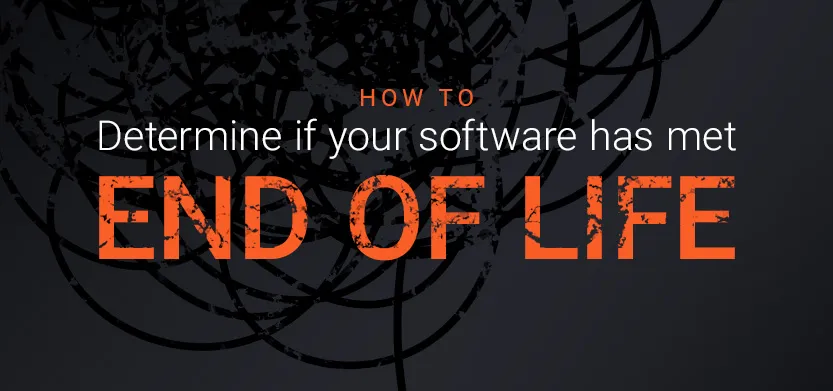
Author
Becky Parisotto
, Acro Commerce Alumni
Posted in Software & Development
June 16, 2020
How to determine if your software has met end-of-life
A quick guide to reviewing your ecommerce platform
All software will eventually meet the end of life. It’s up to you to determine if the risks of running an unsupported platform or software system outweigh the hassle and expense of migrating to a new technological architecture or ecommerce platform.
But in order to make an accurate assessment of your software or platform's state of wellness, you need to know what metrics are important.
Standard metrics to consider in software end-of-life evaluation.
Common indicators of software quality include:
Let’s dive into each and figure out how to score your system against these general metrics to give an overall health rating.
Reliability
Track your downtime over one month and see if it stacks up to industry standards. Zero downtime is a myth; the aim is 99.99% of uptime, which equates to 4.5 minutes of downtime in one month. More commonly, we see 99.95% as the uptime standard for one month; this means your site can be down for up to 22 minutes a month and still be within standards of reliability. Is your monthly downtime over or under these targets?
Performance efficiency
The basics here are load testing, stress testing and response time.
 Let’s focus on response time. When a user visits your site, is it fast, consistent and handling traffic at scale? Here’s some food for thought: 47% of consumers expect a two-second or less return on a page while shopping online, and 40% of customers will abandon your site if the page takes longer than three seconds to populate.
Let’s focus on response time. When a user visits your site, is it fast, consistent and handling traffic at scale? Here’s some food for thought: 47% of consumers expect a two-second or less return on a page while shopping online, and 40% of customers will abandon your site if the page takes longer than three seconds to populate.
Is your ecommerce platform still producing at this rate of response, or is it getting sluggish and losing customers? Give yourself a rating in this area of evaluation to see where you sit.
Security
Check for things like:
- Bug fixes
- Ongoing patches and upgrades from the provider
- SSL certification compatibility
- Proper checkout standards and credit card treatments
The universal standard for ecommerce site security is called PCI compliance. Is your site fully compliant with this global documentation? If the answer is yes, you have some life left in you. If the answer is no, it’s time to begin the sunsetting process and explore your migration options.
Maintainability
Is the software provider still producing code to keep your site healthy, or have they moved on to building and maintaining a future version of the platform? Find out if you’re flying solo or still getting the support and maintenance of the greater community.
Talk with your vendor or in-house development team about how easy or hard it is to make updates to the site. Work with your development leaders to evaluate technical debt, and give this a pass / fail rating.
Rate of delivery/availability of new features
Can you upgrade and improve features on your ecommerce setup, or are you getting left behind? Examine the costs involved in making changes and the time it takes to do so.
If changes are happening at the same rate as they always were, you’re in the clear. If making changes is taking longer or getting more costly, or it’s becoming harder to find programmers with the appropriate skills, flag this as a sliding quality metric.
Usability
Are your sales increasing, or are your customers bouncing over to a competitor with a more modern, elegant and speedy front-end experience?
Talk to the CSR team and find out what the common complaints are. Can you fix these within your current platform, or is your ecommerce ecosystem costing you sales? Your customers' feedback should carry the same weight as the feedback of internal stakeholders. Score yourself honestly and/or provide a quick on-site survey to get the insider track on what the users think.
Conclusion
Using these common metrics to determine the state of your software is an easy first step in figuring out when you’ll need to think about your system’s end of life.
Use the data collected through this self-evaluation to have an open and productive discussion with your team. Also, consider taking the outcomes from this process and stacking the findings up against a budgetary evaluation or a technical roadmap to paint a fuller picture of when you will need to move to more modern architecture.
If you’ve determined your system has met its end of life, download our guide to build out your decommissioning playbook. That way, you can move forward informed and in control.

